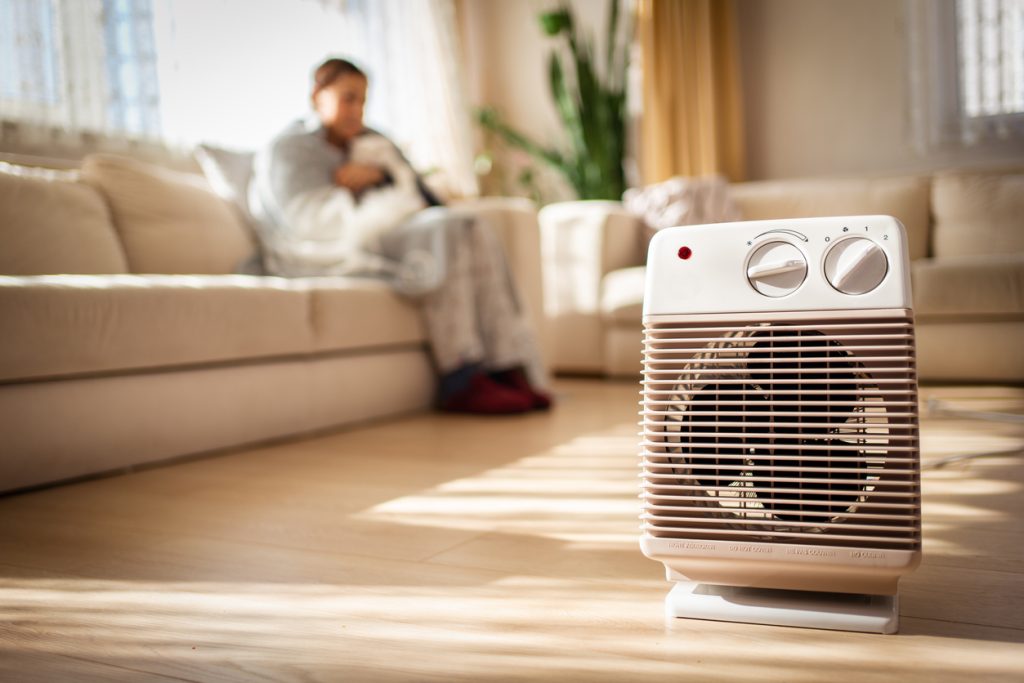
As temperatures drop, maintaining a cozy indoor environment becomes a top priority. While bundling up in layers is one option, a portable electric heater could be the perfect solution to keep your space comfortably warm this season.
Like any appliance, portable electric heaters come in a variety of models and sizes, with different features. We’ve put together a guide to make it easy for you to choose your next portable heater and use it safely.
Heaters are classified based on how they generate heat. Your choice will depend on your heating needs:
- Panel heaters could be wall-mounted or freestanding, and may include fans.
- Radiant heaters generate warmth by heating oil within the unit, though the oil doesn’t need to be refilled.
- Fan heaters distribute heat from an element using a fan.
- Ceramic heaters use a ceramic heating element and may also use a fan to spread heat.
- Infrared heaters generate heat from a surface within the heater. The heat is emitted in the form of infrared energy.
What you need to consider
Sorting through all of your options for an electric heater could take until summer. Knowing how you’ll use the heater will help you narrow your choices. Here are three questions to consider:
Will you be using the heater for temporary personal heat or to keep a room steadily warm? The size and type of heater, and the size of the space you’re trying to heat, will be factors.
Do you need instant heat, or can the heat be generated gradually? Keeping your feet warm under your desk at work for a few hours will call for a different solution than making sure guests stay warm overnight in a chilly bedroom.
What’s your noise tolerance? Any heater with a fan will generate some level of sound. An in-store demonstration will help you decide what’s appropriate.
Heater features
Personal electric heaters offer a number of features for operation, safety and heat distribution. They might include:
- A thermostat to keep the heat at a steady temperature. Some models offer a digital setting.
- Oscillation to distribute heat
- Adjustable fan speeds
- Some types of heaters may employ additional safety features, including automatic shutoff if the heater tips over, cool-touch housing, child locks, or motion sensors that automatically turn the heater off if anything gets too close.
Portable heater safety
There are a number of steps you should take to heat your home safely, regardless of the style of heater you choose:
- Purchase a heater that is safety certified, meaning it has been tested by a Nationally Recognized Testing Laboratory. Look for a safety certification mark on the packaging or the heater.
- Never leave a heater unattended when it is being used and always unplug heaters when they are not being used.
- Do not use a heater with a power strip or extension cord. Overheating of a power strip or extension cord could result in a fire.
- Avoid placing anything on top of the cord, including furniture, as it could damage the cord. String cords out on top of area rugs and carpeting.
- Keep combustible materials, including furniture, pillows, bedding, papers, clothes and curtains, at least three feet away from the front, sides and rear of the heater.
- Keep flammable materials, such as gas and paint, away from the heater.
- Do not use heaters in wet or damp areas unless they are designed for bathrooms or outdoor use. Moisture may damage heaters not designed for this.
- Periodically check the plug and outlet for a secure fit. The outlet may need to be replaced if the plug does not fit snugly or if the plug becomes very hot. Consult with a qualified electrician to replace the outlet.
- Don’t plug any other electrical device into the same outlet as the heater. It could result in overheating.
- Keep children away from heaters and do not place one unattended in a child’s room.
- Place heaters on a flat, level surface. Only use heaters on table tops when specified by the manufacturer. Do not place your heater on furniture. It could fall, dis¬lodging or breaking parts in the heater.
- To reduce the risk of hyperthermia, which can be fatal, do not leave space heaters operating unattended in a confined space around infants or individuals with reduced sensory or mental capabilities.
Stay warm, and know that you’ll be looking for air conditioners before you know it. (And if you want to get an early start on AC shopping, we have you covered.)

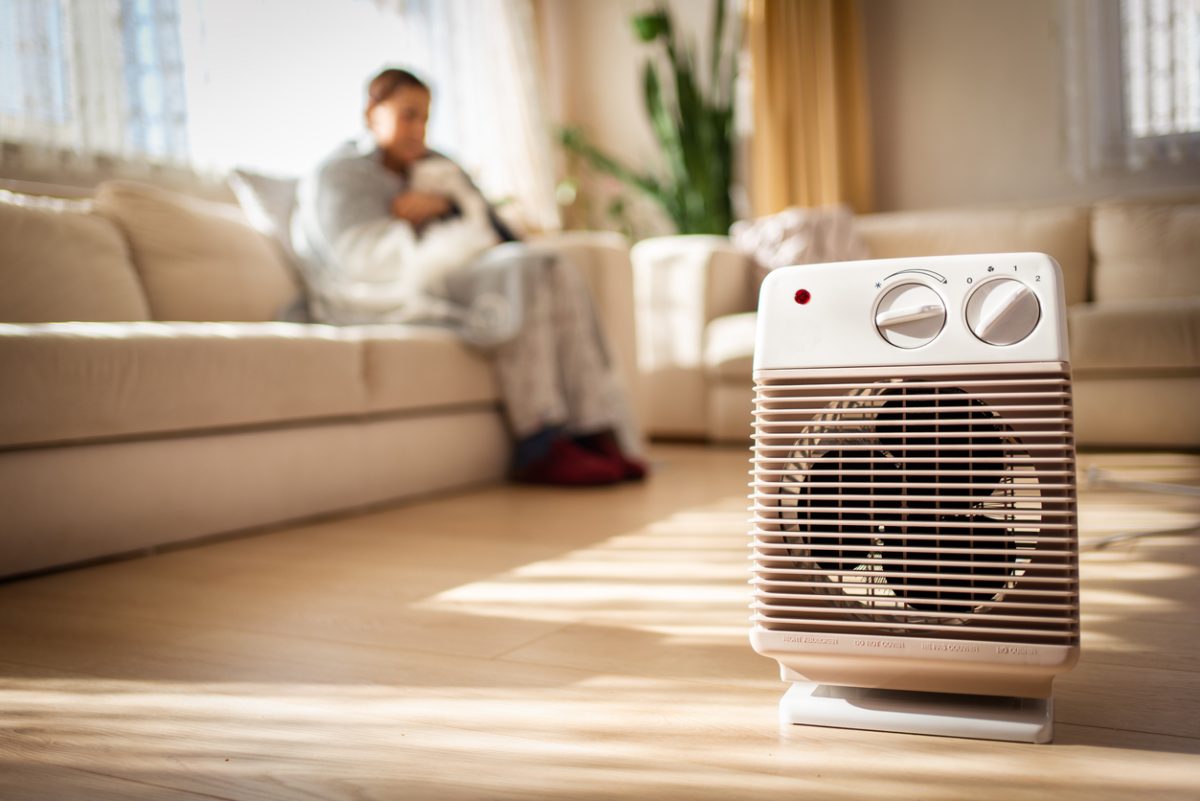
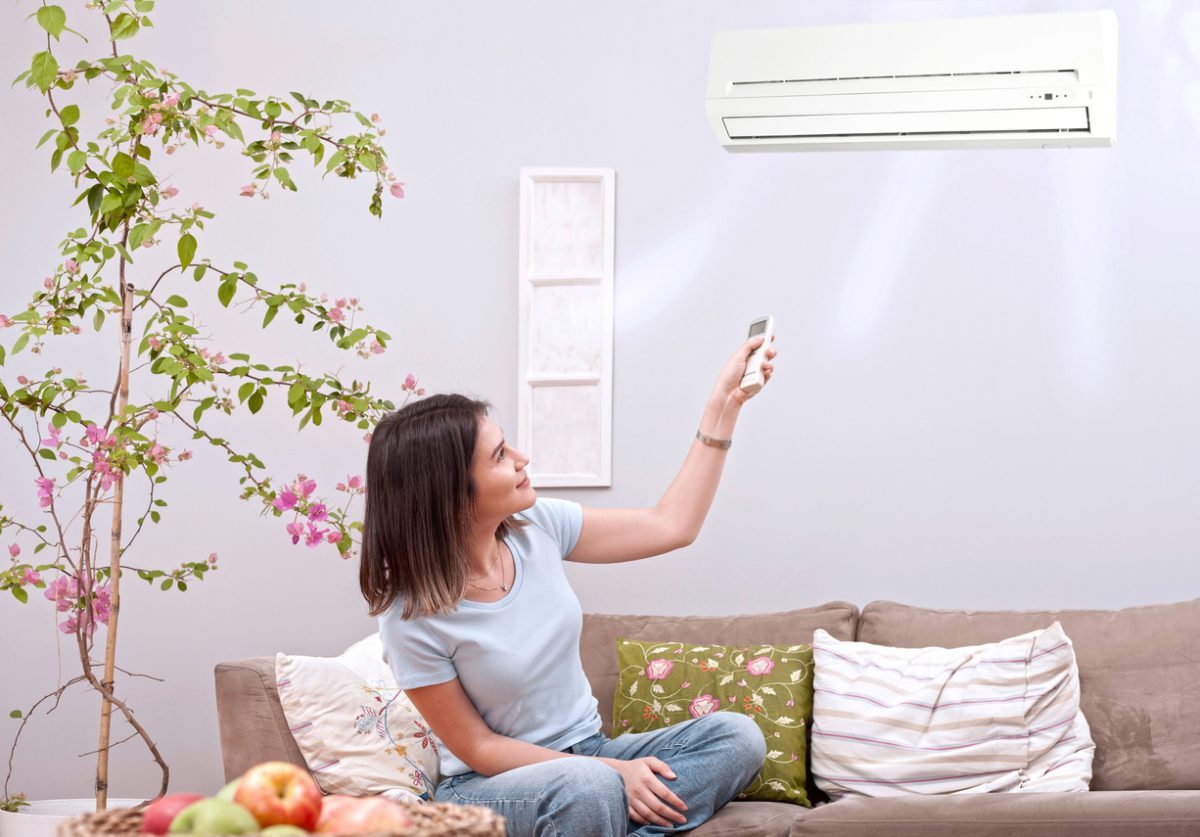



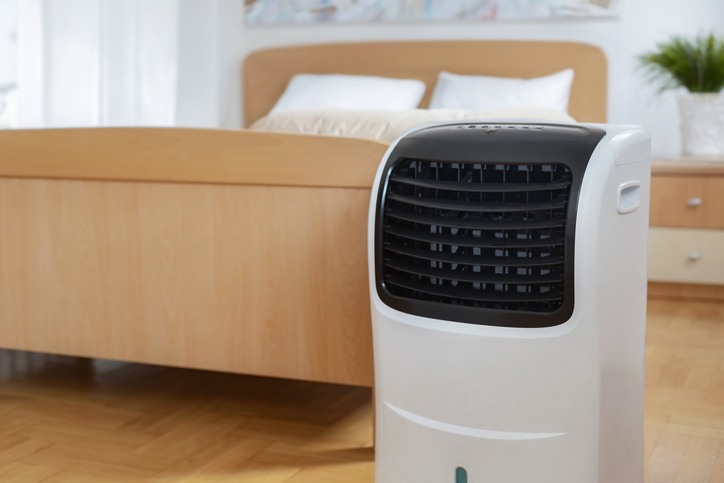

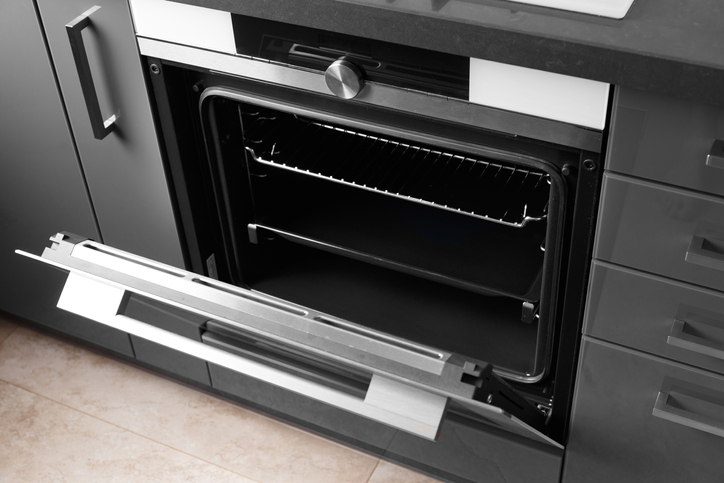
 Have you taken steps to prevent range-tipping accidents in your home? Typically, range-tipping accidents occur when a child climbs on to the open door of a range which has not been secured to the floor or wall by an anti-tip bracket and the child’s weight causes the range to tip over onto the child. This can cause death or serious injury from the weight of the range, plus burns and scalding injuries from hot food and liquids that fall from the cooktop.
Have you taken steps to prevent range-tipping accidents in your home? Typically, range-tipping accidents occur when a child climbs on to the open door of a range which has not been secured to the floor or wall by an anti-tip bracket and the child’s weight causes the range to tip over onto the child. This can cause death or serious injury from the weight of the range, plus burns and scalding injuries from hot food and liquids that fall from the cooktop.
 There are more than 100 million ranges and cooktops in use in the U.S. today, and most are operated safely and without incident. When cooking fires do occur, they’re usually preventable through a few simple steps. AHAM has partnered with UL, the National Association of State Fire Marshals, and the National Safety Council to develop its Recipe for Safer Cooking. These preventive measures will help you greatly reduce the chances that a cooking fire will occur in your home:
There are more than 100 million ranges and cooktops in use in the U.S. today, and most are operated safely and without incident. When cooking fires do occur, they’re usually preventable through a few simple steps. AHAM has partnered with UL, the National Association of State Fire Marshals, and the National Safety Council to develop its Recipe for Safer Cooking. These preventive measures will help you greatly reduce the chances that a cooking fire will occur in your home:


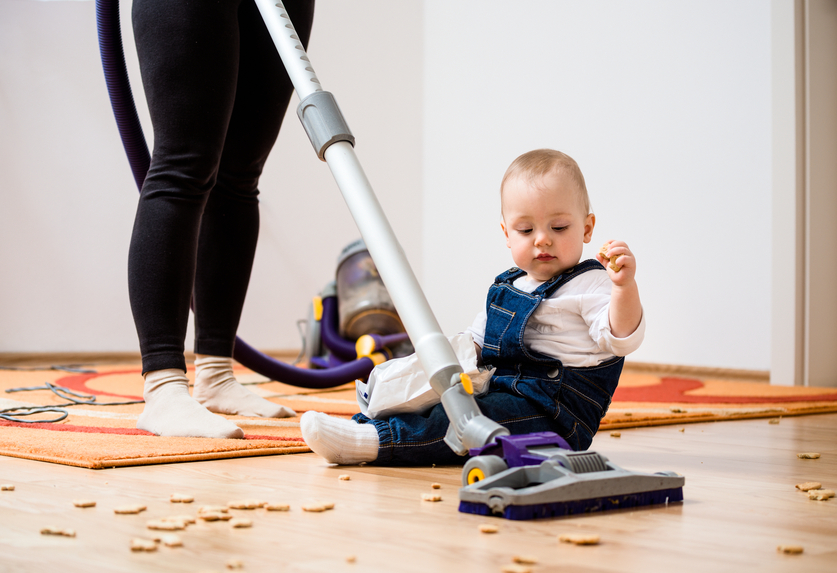
 Upright: An upright is likely what comes to mind when you think of a vacuum. It’s a traditional, full-size, pushable format with or without a mechanical brush roll. It will work well and provide deep cleaning capability on many types of carpets, but it often is not the best choice for a house with only hardwood or other bare floors. Most will include attachments like a dusting brush, crevice tool and upholstery cleaner. Some may also include detachable handheld or smaller vacuum units. The key to cleaning carpeted floors is to have suction, air flow and good filtration. It is important to agitate the carpet with a mechanical brush roller at the same time the suction and air flow pick up the dirt and move it into the receptacle or bag.
Upright: An upright is likely what comes to mind when you think of a vacuum. It’s a traditional, full-size, pushable format with or without a mechanical brush roll. It will work well and provide deep cleaning capability on many types of carpets, but it often is not the best choice for a house with only hardwood or other bare floors. Most will include attachments like a dusting brush, crevice tool and upholstery cleaner. Some may also include detachable handheld or smaller vacuum units. The key to cleaning carpeted floors is to have suction, air flow and good filtration. It is important to agitate the carpet with a mechanical brush roller at the same time the suction and air flow pick up the dirt and move it into the receptacle or bag. Canister: Unlike the upright, you won’t push the whole vacuum when using a canister, though they do need to be pulled. Unlike the upright, the canister can be maneuvered for stairs and difficult to reach places. The body is separate from the wand and floor tool, connected by a hose. They’re designed for the ability to be lighter weight when doing above floor cleaning (dusting, crevice cleaning, upholstery cleaning, etc.), but can also provide deep cleaning for carpet.
Canister: Unlike the upright, you won’t push the whole vacuum when using a canister, though they do need to be pulled. Unlike the upright, the canister can be maneuvered for stairs and difficult to reach places. The body is separate from the wand and floor tool, connected by a hose. They’re designed for the ability to be lighter weight when doing above floor cleaning (dusting, crevice cleaning, upholstery cleaning, etc.), but can also provide deep cleaning for carpet. Stick: Think of these as the everyday cleanup tool for mealtimes, pet hair and spills on hard surfaces and area rugs, but not as much for heavy carpet cleaning. They’re available in both corded and cordless, though there’s a trend toward cordless models.
Stick: Think of these as the everyday cleanup tool for mealtimes, pet hair and spills on hard surfaces and area rugs, but not as much for heavy carpet cleaning. They’re available in both corded and cordless, though there’s a trend toward cordless models. Handheld: Handheld vacuums are made for smaller clean-ups. They’re often light enough to be operated with one hand, but some larger models may include hoses or attachments to tackle bigger messes. Again, they are available in both corded and cordless, although the cordless ones are more prominent.
Handheld: Handheld vacuums are made for smaller clean-ups. They’re often light enough to be operated with one hand, but some larger models may include hoses or attachments to tackle bigger messes. Again, they are available in both corded and cordless, although the cordless ones are more prominent. Robotic: They’ll do the cleaning for you. Robotic vacuums are growing in popularity. They can be set to clean for a certain time and some are capable of following certain patterns or mapping a house or room. They don’t have the capacity of the other types of vacuums. They can clean carpets or hard surfaces, but may not have the deep-cleaning power of an upright or canister vacuum.
Robotic: They’ll do the cleaning for you. Robotic vacuums are growing in popularity. They can be set to clean for a certain time and some are capable of following certain patterns or mapping a house or room. They don’t have the capacity of the other types of vacuums. They can clean carpets or hard surfaces, but may not have the deep-cleaning power of an upright or canister vacuum.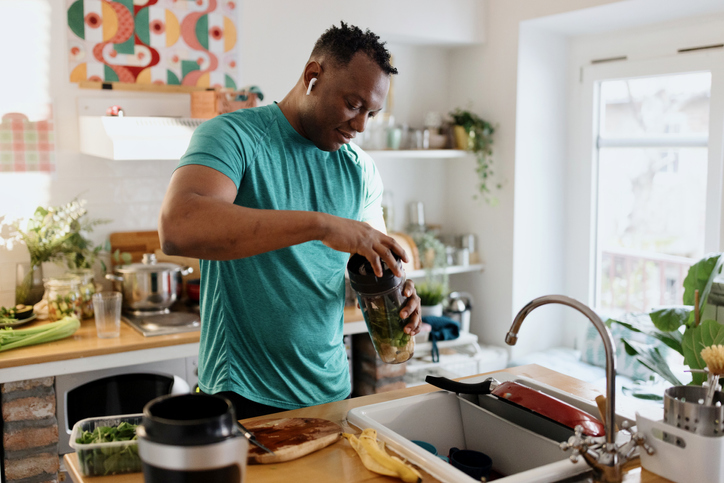
 What’s the biggest barrier to healthier eating? Certainly, willpower and determination are factors. But according to Isabel Maples, a registered dietitian practicing in Virginia, the biggest challenge for many is planning.
What’s the biggest barrier to healthier eating? Certainly, willpower and determination are factors. But according to Isabel Maples, a registered dietitian practicing in Virginia, the biggest challenge for many is planning.
 Happy National Coffee Day! Coffee is firmly entrenched as America’s favorite beverage, with 63 percent of Americans reporting they had coffee in the past day, according to an April 2023 survey by the National Coffee Association. Coffee topped bottled water (61%) tea (45%), tap water (45%), soft drinks (41%) and juice (22%) in the survey.
Happy National Coffee Day! Coffee is firmly entrenched as America’s favorite beverage, with 63 percent of Americans reporting they had coffee in the past day, according to an April 2023 survey by the National Coffee Association. Coffee topped bottled water (61%) tea (45%), tap water (45%), soft drinks (41%) and juice (22%) in the survey.
